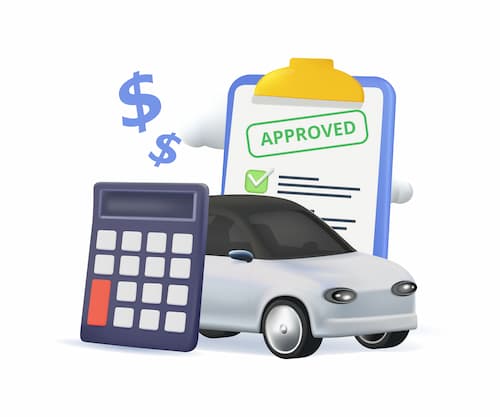How are average insurance rates calculated?
Average insurance rates are calculated by selecting a profile and coverage levels as well as other parameters such as location. The broader the selection of these variables, the fewer people they’ll apply to.
For example, if you want to calculate average car insurance rates, there are many ways to approach it. Let’s say you want to know the average car insurance rates in California.
There are a lot of drivers in California. More than 27 million, according to the Federal Highway Administration. And those people drive a lot of different cars, have different driving records and different levels of coverage. It’s possible to create an average rate from all of those drivers, but it would be a very high-level view and not really reflective of any one person’s situation.
So instead, an average is created using a particular driver profile. An age, driving record (usually clean to create a baseline), and then a particular vehicle is chosen. It’s important when looking at average rates to know what that particular profile is. For example, Insurance.com’s average car insurance rates are based on a 40-year-old male driver with a 2021 Honda Accord LX.
From that baseline, further averages can be created. What if that driver had a speeding ticket? What about an accident? How much would that driver pay for state minimum liability coverage or for full coverage?
We can look at the rates across multiple ZIP codes and compare them from many insurance companies. We can also compare rates for other age groups to that baseline average.
The same applies to average home insurance rates. No two houses or homeowners are exactly the same, so there are a lot of variables. Those can include the size and age of the house, risks like a pool and finishes in the house like floors and countertops. Averages are usually based on dwelling coverage amounts, which may be higher or lower than your actual coverage needs.
From a large quantity of data, average rates can be narrowed down and calculated in various ways. Not everyone will approach it in the same way, and there’s no wrong way – as long as the parameters that are used are clearly explained.
What factors affect average insurance rates?
Some of the factors that can be used to calculate average car insurance rates are:
- Age and gender
- Location
- Vehicle year, make and model
- Driving record
- Credit history
- Claims history
- Coverage level
Some of the factors that can be used to calculate home insurance rates are:
- Age of the home
- Square footage
- Location
- Construction materials
- Claims history for both the home and the homeowner
- Risks on and around the property
- Credit history
- Coverage level
All of these factors can be applied in a multitude of different ways.
Why do I see different average rates on different sites?
As noted above, there are a variety of profiles that can be used to calculate an average. If one site provides an average rate that’s a lot lower than what you’ve seen elsewhere, it’s important to look at the parameters that were used.
Are you looking at rates for state minimum liability coverage vs. full coverage? Is the rate for a younger or older driver? Even things like which ZIP codes were used and which insurance companies provided rates will impact the final average. Again, the same applies to home insurance rates.
There’s no official profile that’s used when calculating insurance rates, so the variations in that profile will mean a lot of variation in the rates. A good source will outline the methodology that was used to create average rates in as much detail as possible so that the reader knows what they’re looking at. Look for that information at the bottom of the page (that’s where you will find it on Insurance.com pages) or in a pop-up or drop-down box.
How are average insurance rates useful?
It’s fair to wonder how seeing the average rates for a 40-year-old male driver with a clean record apply to you if you’re a 25-year-old female who had an accident last year. While the rates themselves likely aren’t, the trends they uncover can help anyone.
Furthermore, having those rates creates a baseline for comparison. If rates for a 40-year-old show one company to be the cheapest, and you see a completely different cheapest company for your age and profile, it’s a good clue as to how those companies are weighing factors like age.
At the end of the day, average rates are simply a starting point. They’re created to provide an overview and allow the reader to compare their own quotes with overall averages.
If you’re looking to buy a new car and want a general idea of which of the cars on your list is the cheapest to insure, average rates are a quick look into those numbers. If you’re considering a move and want to know what insurance rates are like in your new ZIP code, averages can tell you.
Average insurance rates: The bottom line
Averages should always be taken as a helpful basis from which to start your search for insurance rates. Your rates will always differ, but knowing the average can tell you whether the insurance quotes you’re getting are really high or even really low.
Because there are a lot of insurance companies out there, averages can also help you figure out where to start your search. From there, it’s vital to compare as many as possible based on your own specific profile variables and coverage needs. The more detailed those variables are, the more accurate the quotes you get will be.



